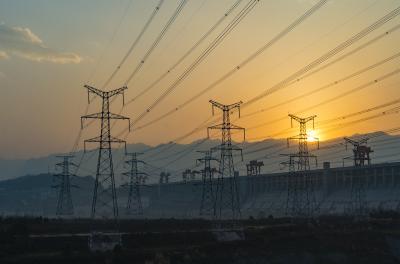By Vishal GulatiNew Delhi, Sep 26 : With only weeks from the most important UN climate event or COP27 happening in Egypt’s coastal city of Sharm El-Sheikh amid a growing realisation that the impact of climate change is here and the world needs to come together to act now, IANS takes a look about how India’s updated climate plan, comprising 45 per cent reduction in emissions intensity by 2030, adds to set a good momentum.
According to a new study published in the prestigious journal Nature Communications and authored by researchers at Lappeenranta-Lahti University of Technology (LUT), who modelled the Indian power sector transition in a state-wide resolution on an hourly timescale up to 2050 for the first-time, the authors estimated that the cost of electricity can come down by 40 per cent.
Solar will become cheaper to be one-fifth of coal by 2030 and one-tenth of it by 2050.
They say coal plants will be at a risk of becoming stranded during the transition period as they have very low capacity factors.
And coal can phase out from some of the major coal dependent states like Uttar Pradesh, Odisha, West Bengal, Maharashtra, Gujarat and Jharkhand by 2040.
“Moving to solar is the obvious choice for India.Not just the cost of solar, the cost of battery storage is expected to drop further making it even easier for grid balancing and managing peak demand.Our study shows that any new investments in fossil fuel based thermal power capacity today is economically unviable and could be a burden for a future flexible power system,” Manish Ram, an author of the study, told IANS.
The recent slew of policies show that India is serious about meeting its 2030 decadal targets, which can set the pathway for its 2070 net-zero decarbonisation, pledged by Prime Minister Narendra Modi in November at the COP26 climate summit in Glasgow, UK.
The draft National Electricity Plan 2022 (NEP2022) sees significant increase in installed solar power capacity by 2027, 2030, and a downward revision of installed coal capacity when compared to Central Electricity Authority’s (CEA) Optimal Generation Capacity Mix report that was released in 2020.
According to NEP22, solar targets for 2032 have increased by 18 per cent compared to India’s earlier estimates.India also increased its battery storage target from 27GW of four-hour storage to 51GW of five-hour storage.
Whereas 2031-32 installed coal capacity was reduced by 18GW when compared to CEA’s Optimal Generation Capacity Mix 2029-30 report released in 2020.
According to the International Energy Agency’s 2021 India Energy Outlook, India is on track to reach net-zero emissions beyond the modelling horizon — in the mid of 2060s.
R.R.Rashmi, Distinguished Fellow at The Energy and Resources Institute, said, “We should be focussing on 2030 instead of net-zero in the long run.While net-zero is of course part of the discourse now, it needs to be seen from the context of strategic and sectoral decarbonisation policies, which are part of the long-term strategy and India is also moving in that direction.
“Further enhancement of the NDCs (Nationally Determined Contributions) should await the outcome of the global stocktake, which is about a year away.”
While there seems to be a positive environment for India’s decarbonisation with the political and policy leadership on the front, the market momentum cannot be ignored and it will drive and accelerate this pickup.
A CEEW-IEA report analysed that there is a 300 per cent surge in the total value of acquisitions in India’s renewable energy sector in the first 10 months of 2021, this signals an enhanced appetite for companies to invest in climate-friendly technologies.
Big businesses like Adani and Reliance are betting big on clean energy as the next big pillars of their business portfolios, setting the trends for market and capital.
Global energy think tank Ember released its latest analysis last week, showing that India by August had achieved two-thirds of its end of year 175 GW renewable target.
Gujarat joined Telangana, Rajasthan and Karnataka in achieving this target.
Four states account for the majority of the shortfall, namely Maharashtra, Uttar Pradesh, Andhra Pradesh, and Madhya Pradesh.
The analysis shows that solar is becoming mainstream in India.
It has experienced strong solar growth in 2022, with new solar installations rising by 22 per cent in the first eight months of the year compared to the same period last year.
With the UNFCCC COP27 coming up in November, India’s Environment Ministry is in the middle of developing its long-term strategy, which will give shape and contours to the net-zero target by 2070.
Experts told IANS while internationally India’s NDCs may not seem ambitious enough, domestically it is going much further and keeping the eye on how the next decade will chart the path for 2070.
(Vishal Gulati can be contacted at vishal.g @ians.in)
vg/dpb
#Indias #stronger #targets #momentum #Telugu #TeluguStop #Telangana #AndhraPradesh #Delhi #Narendra Modi # Narendra Modi #Rashmi # Vishal #Vishal #Telangana
#Delhi #New Delhi #Gujarat #Jharkhand #Karnataka #Maharashtra #Odisha #Rajasthan #Telangana #Uttar Pradesh #West Bengal #Adani #Narendra
.






